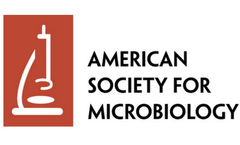Host Plant Articles & Analysis
21 articles found
Some species can also produce anti-aggregation pheromones after the population reaches a certain level to promote individuals within the species to find new hosts or food sources and reduce intraspecific competition. This bidirectional regulatory mechanism can effectively control the population density and maximize the interests of the group. ...
Whether you are new to growing indoors or a seasoned professional, one thing is for certain – you can’t take your eye off the ball with pest control! One of the most common pests to plague our grow rooms are the white aphid. Secondary to those are black aphids, which are very similar. If you’ve not experienced an aphid attack yet then count yourself lucky. There is no surefire ...
Sustainability @ Adaptive, along with Karen Robins (Chad and Harlan’s mom!) recently hosted a planting session for flowers, vegetables, and herbs in these plant beds to welcome springtime and foster an appreciation for growing and consuming locally. As a companion to these plant beds, another addition to our rooftop has ...
Test roosting host plants were placed in pots clustered around a protein bait trap about 20 meters from the orchard. Potential roosting host plants included plants that could be planted as border plants, common weed species, agricultural crops and fruit trees. Relative ...
Figuring out why certain soils keep plant parasites at bay could be a boon for agriculture around the globe Plants around the world are constantly under attack — often with big implications for humans. ...
ByEnsia
Working best at low to moderate disease pressures, they promote rooting and plant growth. One example is a product called Rootshield distributed by BioWorks. ...
Below the soil of a diverse grassland area you’ll find a jungle of plant roots. It is also home to a wide variety of bacteria and fungi, of which some are pathogenic and looking for a host in the tangle of roots. It appears that this is much more difficult when there is a larger diversity of plants as the host ...
They found that more than one in 10 of all pest types can already be found in half of the countries that grow the host plants on which these pests depend. Most countries reported around one fifth of the pests that could theoretically make their home there. ...
To study the effects of herbicides on host plant quality, we treated 3 plant species (Plantago lanceolata L., P. major L., and Ranunculus acris L.) with sublethal rates of either a sulfonylurea (Atlantis WG, Bayer CropScience) or a glyphosate (Roundup LB Plus, Monsanto) herbicide and observed the development of caterpillars of the cabbage moth ...
Additionally, significant QTL for infestation and cutting on chromosomes 2D and 4A were present in several environments, and did not cosegregate with heading date, plant height, or solid stems. These QTL may complement the use of solid stems for host plant resistance by developing wheat lines that vary for attractiveness to the wheat stem ...
Parasitic plants utilize cell wall degrading enzymes (CWDEs) to penetrate their host plant and attach to host vasculature. Inhibition of CWDEs may confer resistance on susceptible hosts, offering a strategy for parasitic plant control. Here, exogenous application of green tea catechins, which ...
Pls1 tetraspanins were shown for some pathogenic fungi to be essential for appressorium-mediated penetration into their host plants. We show here that Podospora anserina, a saprobic fungus lacking appressorium, contains PaPls1, a gene orthologous to known PLS1 genes. ...
Tan spot severity ranged from 12 to 64%, based on leaf ratings at anthesis across four environments when second year wheat was no-till planted. Removing previous crop residue by burning or tillage, host plant resistance and fungicide applications reduced tan spot severity across four environments 49, 30, 58, and 93%, respectively. Severities were ...
Using a servosphere (locomotion compensator), locomotory behavior of Colorado potato beetle Leptinotarsa decemlineata Say (Coleoptera: Chrysomelidae) larvae was measured in detail in response to pulsed and non-pulsed odors of hostplant and conspecific pheromone. Second instars showed decreased straightness of movement, and all larvae showed decreased speed, in response to potato odor. Change in ...
Understanding the mechanisms underlying host plant preferences of herbivorous pests can lead to improved effectiveness and reliability of the trap crop. ...
Oviposition preference and several measures of offspring performance of Helicoverpa armigera (Hübner) were investigated on a subset of its host plants that were selected for their reputed importance in the field in Australia. ...
The present study aimed to verify (1) whether seasonal increases in neotropical populations of Plutella xylostella are directly provoked by regular influxes of migrants, and (2) whether temporal variation in food availability is the ecological process behind such predictable events. Over 3 years, plants that P. xylostella prefers were cultivated and irrigated in order to provide ...
The longevity of Erisan fed with alder leaves was independent of CO2 levels and was longer on alder seedlings grown in infertile soil conditions. Alder is an actinorhizal plant that can fix atmospheric nitrogen in root nodules formed by the actinomycetes Frankia sp. The activity of symbiotic microbes would have been enhanced by the greater amount of photosynthates received from ...
Synchronization between the appearance of herbivorous insects and their host-plant phenology is a critical event, especially for short-lived insects such as gall midges. ...
The extent of endophytic colonization of host plant organs and tissues reflects the ability of bacteria to selectively adapt to these specific ecological niches. Consequently, intimate associations between bacteria and host plants can be formed without harming the plant. Although, it is generally assumed that ...












